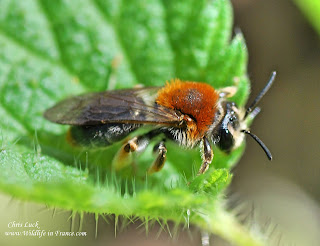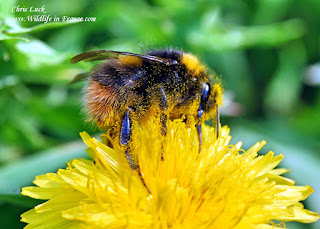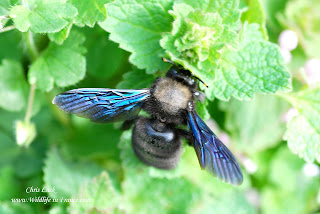It would be negligent in the extreme to
ignore the importance of Organic food production if we are to be serious about preserving
our wildlife and the environment. All of the major French Bird and Wildlife
Associations are now forming relationships and working closely with Organic
farmers to enable them to be even more “Wildlife friendly” including installing ponds, hedgerows, bird and bat boxes.
Although the consumption of organically
produced food or Bio as it is known in France still only represents 3% of the total
food consumed both the growth in demand and availability are increasing at an
unprecedented rate with sales in 2015 reaching 5.75 billion euros which in
itself is probably an underestimate. France
itself at the end of 2015 had 28,725 certified organic farmers and 1.3 million
hectares of certified land.
Of course a considerable amount of the
organic food purchased in France
isn’t actually produced in France
but is imported from other countries. In some cases this is simply because the
food in question couldn’t be grown in France, (Bananas, Coconuts, Pomegranates,
Citrus fruits are good examples), or because France simply can’t or doesn’t
produce sufficient quantities of some produce which can be for a number of
reasons such as not having enough people or land in the given sector or because
another country has a better climate and length of season providing greater
productivity.
The issue of where the food is actually
produced and how it is marketed is needless to say contentious and
understandably so. Some people are of the opinion that all our needs should be
met by buying local produce from a local producer and this is certainly something
that makes good sense but there are limits to what can be purchased in this
manner and at best will only supply a small part of a person’s diet. Much will depend on what local producers are present, what distance you would need to
travel and when bearing in mind that people have work and other commitments. Many
local producers do sell from home whether that be a farm, market garden or
their house but frequently with fixed times and perhaps only for a couple of
hours a week in addition to which they may be present at one local market a
week.
Click photos to enlarge.
Fresh Organic produce from a local grower.
Depending on where you live there may
be a specialist organic or partially organic food /health shop within a
relatively comfortable travelling distance and these will usually stock produce
from a number of different local producers as well as stocking some produce
from further away with dry and pre-packaged foods from other countries. These
smaller retail outlets along with some of the growers often provide a more
personal service and many will also take orders by phone or e-mail as a “box”
service and may deliver to market. Frequently
these outlets will also perform other functions providing a place where people
will connect socially or perhaps find information regarding alternative
therapies and other less mainstream groups or events.
Above: Monthly Organic producers market at an Organic farm.
Above: Organic cheese producer Grégoire Masse with his marbled Goat and Cows milk cheese.
Then we have one of the major drivers
of growth in the Organic sector, the Supermarkets that have really started to
come into their own in France over the last couple of years and recently some
such as Auchan are pushing forwards providing a great range of interesting
produce. Many people have fundamental objections to Supermarkets but the
reality is that they are of great importance making available to the consumer types
of organic produce that they wouldn’t be able to source elsewhere which has to
be good for both peoples health and the environment where production takes
place.
Photo above: Organic Spelt bread mix that can be used either by hand or in a bread machine.

Above Left: Organic pure pomegranate juice. Right: Organic rice milk
This gives us more or less three
different supply lines to the consumer all of which have an equal role to play
in providing people with produce that is both kinder to the environment and
healthy to use or eat either of which should be a good enough reason to buy
organic wherever possible.
It should be mentioned that an argument
that is frequently made is that not everyone can afford to buy organic produce
but this really isn’t the case and although it may not be possible to “go
completely organic” it is well within most people’s budget to make a large
proportion of their purchases organic. It may require some changes in lifestyle,
perhaps trying different meals that use different ingredients and avoiding fast
food. Reducing meat, poultry and dairy consumption will save money and provide
health benefits as well as reducing the burden on land use.
With over 40% of consumers in France
making some organic purchases every week and 10% on a daily basis in 2015 the
signs are encouraging and hopefully this will continue to grow. With pesticides
and industrial food production being the major causes of environmental
destruction leading to both habitat and species loss it’s something where we
can all make a real difference just by changing what we buy.
Together we can make a difference.
Chris


















